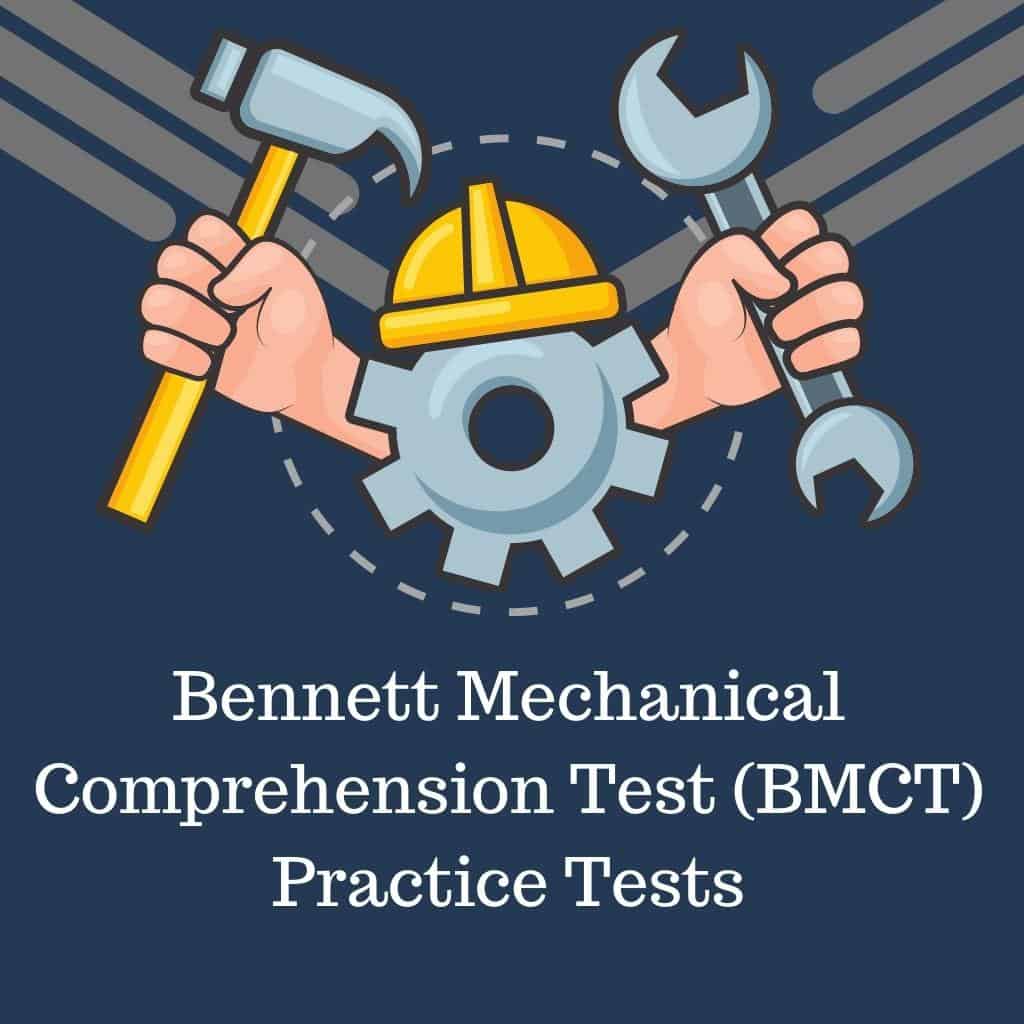Welcome to the ultimate guide to acing the Mechanical Comprehension Test (MCT) - (Also called a Mechanical Reasoning Test)! If you're reading this, you're likely preparing for a test that will measure your understanding of mechanical principles and concepts. Don't worry – we're here to help you navigate this test with ease and confidence.
First, let's clarify what the Mechanical Comprehension Test (MCT) is and why it's important. The MCT is a standardized assessment designed to evaluate an individual's understanding of basic mechanical principles and their applications in various contexts. This test is often used by employers in industries such as manufacturing, engineering, and technical trades to identify candidates with the aptitude for working with machines, tools, and equipment. It helps employers to determine if candidates possess the necessary skills and knowledge for roles that require mechanical comprehension.
Now, it's essential to understand the difference between the MCT and the Mechanical Aptitude Test. While both tests assess an individual's ability to work with mechanical concepts, they differ in scope and focus. The MCT is primarily concerned with evaluating a candidate's understanding of mechanical principles and their applications in real-world scenarios, whereas the Mechanical Aptitude Test is more general, measuring a candidate's ability to learn and apply new mechanical skills.
The purpose of this ultimate guide is to provide you with a detailed roadmap to help you excel in the MCT. We will cover essential concepts and test-taking strategies. Think of this guide as a mentor, guiding you through the process of preparing for the MCT, offering tips and advice, and providing you with the tools and resources you need to achieve your goals.
As we move forward, remember that the key to success in the MCT is a thorough understanding of mechanical principles, familiarity with the test format, and the effective use of test-taking strategies. With this guide as your mentor, you'll be well-equipped to tackle the MCT and achieve the results you desire. So let's begin our journey towards MCT mastery!
Understanding the Mechanical Comprehension Test
Having a solid understanding of the MCT is crucial for success. In this section, we'll discuss the purpose of the MCT, the industries and job roles that require the test, the format and question types, and finally, the scoring and interpretation of results.
1. What is the purpose of the MCT?
The Mechanical Comprehension Test (MCT) serves to assess an individual's understanding of basic mechanical principles and their real-world applications. Employers in various industries use this test to identify candidates who have the aptitude for working with machines, tools, and equipment. By evaluating a candidate's comprehension of mechanical concepts, employers can determine if they possess the necessary skills and knowledge for roles that require mechanical competence.
3. Industries and job roles that require the MCT
The MCT is commonly used in industries such as manufacturing, engineering, automotive, aviation, construction, and technical trades. Some job roles that may require the MCT include:
- Mechanical engineers
- Technicians (e.g., automotive, HVAC, or electrical)
- Machinists
- Maintenance personnel
- Assemblers and fabricators
- Aircraft mechanics
- Electricians
- Plumbers
Keep in mind that specific job roles and industries may use customized versions of the MCT tailored to their needs.
MCT test format and question types
The MCT typically consists of multiple-choice questions, with the number of questions varying depending on the specific test version. Most tests contain 20 to 30 questions, and the allotted time for completion usually ranges from 20 to 30 minutes. The questions cover a wide range of mechanical principles and concepts, such as simple machines, fluid mechanics, and basic physics.
Here are some common question types you may encounter on the MCT:
- Identifying parts of a machine or tool and their functions
- Determining the outcome of a mechanical process or operation
- Predicting the direction of motion or force in a mechanical system
- Calculating work, force, or energy in a mechanical context
- Understanding the principles of fluid mechanics and their applications
- Recognizing the effects of temperature and pressure on mechanical systems
Scoring and interpretation of results
The MCT is usually scored on a raw score basis, meaning that the number of correct answers determines the score. There is generally no penalty for incorrect answers, so it's advisable to attempt every question.
Depending on the test provider, the raw score may be converted to a percentile rank or a scaled score. The percentile rank compares your performance to that of other test-takers, while the scaled score is derived from the raw score using a predetermined formula.
It's important to note that different industries and employers may have their own benchmarks for acceptable MCT scores. Some may require a minimum score or percentile rank, while others may use the scores as just one of several factors in the hiring process. As you prepare for the MCT, it's a good idea to research the specific score requirements for the job role and industry you're targeting.
Essential Concepts for MCT Success
To excel in the MCT, you need to have a strong foundation in various mechanical principles and concepts. In this section, we'll cover the essential concepts required for MCT success.
Mechanical principles and their applications
Mechanical principles involve understanding how objects and systems interact with each other to perform a specific function. You'll need to be familiar with concepts like force, torque, friction, and equilibrium. Understanding how these principles apply in real-world scenarios, such as machines, tools, and other mechanical systems, is crucial for the MCT.
Basic physics concepts: force, motion, energy, and work
Simple machines: levers, pulleys, wheels and axles, inclined planes, screws, and wedges
Simple machines are devices that help make work easier by changing the direction, magnitude, or distance of a force. Familiarize yourself with the six types of simple machines:
- Levers: A lever consists of a rigid bar that rotates around a fixed point called the fulcrum. There are three classes of levers, based on the relative positions of the fulcrum, load, and effort.
- Pulleys: A pulley is a wheel with a groove along its edge that holds a rope, cable, or belt. Pulleys can be used to change the direction of force or to create a mechanical advantage.
- Wheels and axles: This simple machine consists of a larger wheel (or cylinder) attached to a smaller wheel or rod, called an axle. The wheel and axle combination is used to amplify force or increase speed.
- Inclined planes: An inclined plane is a flat, sloping surface that allows you to lift objects with less effort than lifting them vertically. The mechanical advantage of an inclined plane depends on its slope.
- Screws: A screw is an inclined plane wrapped around a central cylinder. It can be used to convert rotational motion into linear motion or to amplify force.
- Wedges: A wedge is a triangular-shaped object used to separate, lift, or hold objects in place. The mechanical advantage of a wedge depends on its slope.
Fluid mechanics: pressure, buoyancy, and fluid flow
Fluid mechanics deals with the behavior of fluids (liquids and gases) and their interactions with solid surfaces. Key concepts include:
- Pressure: Pressure is the force exerted per unit area. Understand how to calculate pressure using the formula P = F/A, where P is pressure, F is force, and A is area.
- Buoyancy: Buoyancy is the upward force exerted on an object submerged in a fluid. Be familiar with Archimedes' principle, which states that the buoyant force on an object is equal to the weight of the fluid it displaces.
- Fluid flow: Understand the concepts of laminar and turbulent flow, as well as the principles of fluid dynamics, including Bernoulli's equation and the continuity equation. Know the difference between incompressible and compressible fluids, and be able to calculate flow rates and fluid velocities.
Thermodynamics: heat, temperature, and energy transfer
Thermodynamics is the study of the relationships between heat, temperature, and energy. Key concepts include:
- Temperature: Temperature is a measure of the average kinetic energy of the particles in a substance. Be familiar with different temperature scales, such as Celsius, Fahrenheit, and Kelvin.
- Heat: Heat is the transfer of energy between substances due to a temperature difference. Understand the concepts of conduction, convection, and radiation as methods of heat transfer.
- Energy transfer: Be familiar with the first and second laws of thermodynamics. The first law, also known as the law of conservation of energy, states that energy cannot be created or destroyed, only converted from one form to another. The second law states that heat will always flow from an area of high temperature to an area of low temperature until equilibrium is reached.
Electricity and magnetism fundamentals
A basic understanding of electricity and magnetism is essential for the MCT. Key concepts include:
- Electric charge: Electric charge is a fundamental property of matter that gives rise to electric forces. Be familiar with the concepts of positive and negative charges, and understand Coulomb's law for calculating the force between charged particles.
- Electric current: Electric current is the flow of electric charge through a conductor. Know how to calculate current using Ohm's law, I = V/R, where I is current, V is voltage, and R is resistance.
- Magnetism: Magnetism is the force exerted by magnets or by moving electric charges. Understand the concepts of magnetic fields, magnetic poles, and electromagnetism, as well as the relationship between electricity and magnetism.
- Basic electrical components: Be familiar with common electrical components such as resistors, capacitors, inductors, switches, and diodes, and understand their functions in electrical circuits.
By mastering these essential concepts, you will have a solid foundation for tackling the MCT. In the next sections, we will explore test-taking strategies and study resources
Conclusion
In conclusion, preparing for the Mechanical Comprehension Test (MCT) requires a combination of mastering essential mechanical concepts, honing test-taking strategies, and utilizing the right study resources. It's important to dedicate sufficient time and effort to understand the fundamental principles of mechanics, physics, thermodynamics, fluid mechanics, and electricity and magnetism, as these form the basis of the MCT.
As you prepare, remember to practice time management techniques, learn how to read and understand questions effectively, and become proficient in using the process of elimination for multiple-choice questions. Managing stress and maintaining focus during the test are also crucial aspects of a successful MCT experience.
Lastly, be mindful of the industries and job roles that require the MCT and research their specific score requirements. This will help you set realistic goals for your test preparation and allow you to tailor your study plan accordingly.
With dedication, perseverance, and the right approach, you can excel in the MCT and open the door to a rewarding career in the mechanical field. Good luck on your journey to MCT success!



